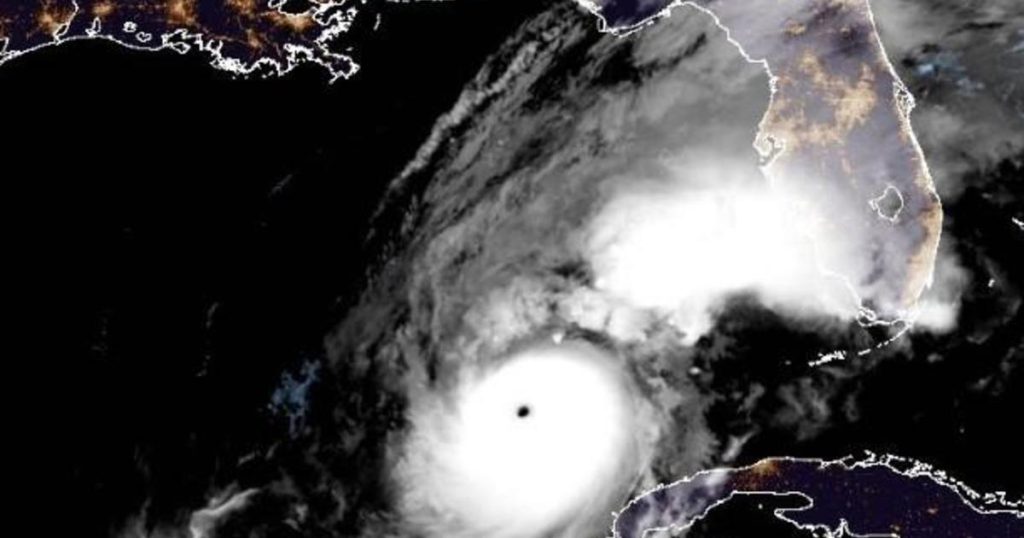Hurricane Milton was a powerful Category 5 storm heading towards Florida’s central west coast, with mass evacuations underway. Forecasted landfall was expected Wednesday night or early Thursday. The storm was predicted to be a major hurricane upon reaching the west-central coast of Florida, impacting areas like Tampa Bay, still recovering from Hurricane Helene. Florida Gov. Ron DeSantis warned that the impacts would be broader than the eye of the storm and urged residents to be prepared for power outages, stock up on supplies, and follow evacuation orders.
As Hurricane Milton approached, Floridians in the potential path of the storm prepared by securing their properties, boarding up windows, and evacuating. 51 counties were under emergency orders, and many gas stations in the area were reporting fuel shortages. The storm was expected to remain a hurricane as it crossed the Florida peninsula, moving towards the Atlantic Ocean. The National Weather Service described Milton as a historic storm for the west coast of Florida, potentially the worst to hit Tampa Bay in over a century.
The rapid intensification of Hurricane Milton into a Category 5 storm posed a significant threat to the Yucatán Peninsula, prompting the Mexican government to issue warnings. Despite weakening slightly, Milton maintained Category 4 status with maximum wind speeds hovering around 160 mph. Forecasters predicted it to remain a major hurricane on its path to the western Florida coast. Multiple areas along the Gulf coast and east coast of Florida were under hurricane and tropical storm warnings, as well as portions of Georgia, South Carolina, and the Bahamas.
The potential landfall location and timing of Hurricane Milton were crucial in predicting the extent of destruction, particularly related to storm surge in the Tampa Bay area. The storm’s intensity was expected to decrease to a Category 3 hurricane upon landfall, with wind speeds of around 125 mph. Forecasters warned of life-threatening storm surge along the Florida Gulf coast, emphasizing the risks especially to vulnerable areas like Tampa Bay. Evacuations were mandatory in many areas, while others chose to stay and brace for impact.
Storm surge warnings extended along the Florida coast into Georgia and South Carolina, with the possibility of up to 15 feet above ground level. Heavy rainfall was expected to cause flooding in various areas of the Florida peninsula. Evacuations were underway, with significant traffic on highways as people fled affected regions. Mayor Jane Castor of Tampa issued a strong warning to residents in evacuation zones, emphasizing the potential catastrophic impacts of Hurricane Milton. President Biden postponed international trips to monitor the storm’s response, urging residents to heed evacuation orders for their safety.
The White House approved emergency declarations in Florida, with FEMA Administrator Deanne Criswell dispatched to coordinate response efforts. President Biden emphasized the seriousness of the situation, stating that it was a matter of life and death for those in the storm’s path. The live radar map showed Hurricane Milton approaching Florida and the Gulf of Mexico, with preparations and evacuations ongoing across the region.















